Stewart Ranch Services
Bowie, Texas
Abilene Road Building in Abilene TX
DESIGN YOUR DREAM
PROPERTY
LAND
ACREAGE
DEVELOPMENT SITE
POND
Abilene Road Building: The Process and Equipment Necessary for Construction in Texas
Through the ages, road construction has evolved significantly, moving from basic mud and brick constructions to the utilization of cutting-edge machinery. This historical progression has played a crucial role in connecting communities across different eras. Our focus now shifts to contemporary times, examining the intricacies of Abilene road building. We scrutinize the techniques and essential equipment components crucial for the triumph of projects in regions like Abilene, Texas, where materials like stone or mud bricks are employed. Sustainability aspects are also explored, highlighting the modern emphasis on eco-friendly construction practices.
Key Takeaways
Table of Contents
The Evolution of Abilene Road Building
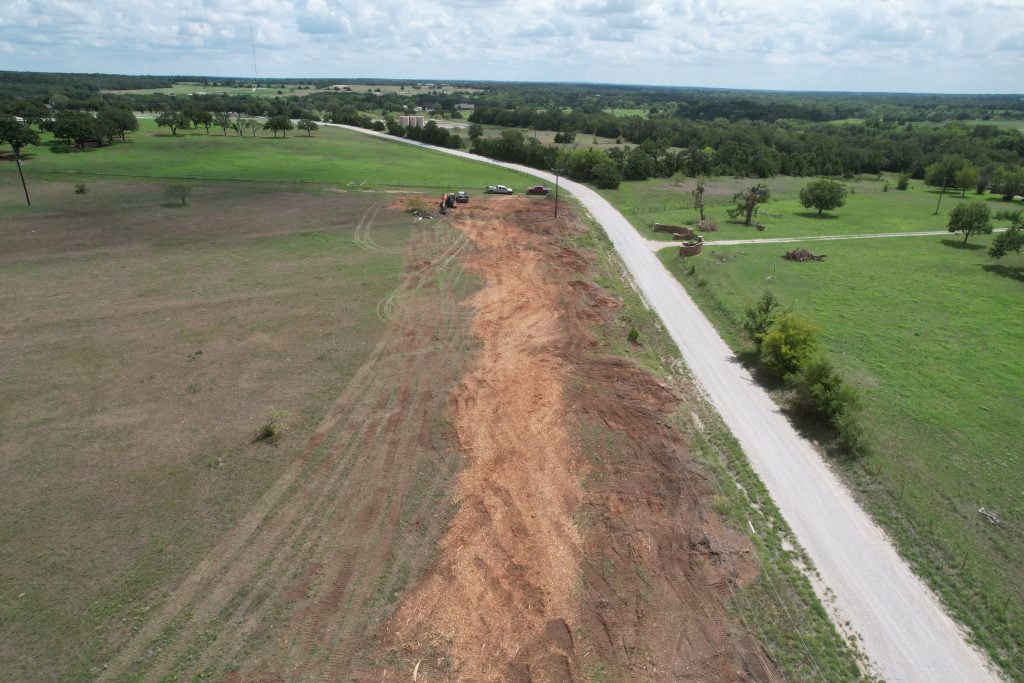
The evolution of road construction emerges as a pivotal thread in the fabric of human history, molding the direction of societal progress. From rudimentary building materials to the advanced technology utilized in contemporary times, there have been substantial improvements in road construction methodologies.
Urban streets and rural pathways have assumed vital roles in facilitating commerce, necessitating the adoption of innovative strategies and resources to cope with the escalating demand for convenience. This examination navigates through the historical epochs, from ancient marketplace avenues to the present landscape of road building in Abilene, Texas.
Ancient Roads
From ancient times, roads have been vital for fostering communication across regions, and their development has been constant.
In Mesopotamia, early roads ingeniously employed mud bricks with bitumen, boasting raised centers for efficient drainage and smoother travel. The dynamics of road construction underwent significant changes during World War II, aiming to enhance connectivity between urban areas, ranches, and farms through rapid transport systems.
This era marked the inception of a transformative journey for rural roads in the country. The implementation process extended beyond construction to include the meticulous maintenance of highways and additional features such as farm roads and ranch paths, with a keen focus on appropriate drainage system designs.
Modern Road Construction
The evolution of road building in Abilene, TX represents a significant improvement, thanks to the integration of advanced components and machinery. Modern construction techniques encompass a wide variety of materials, including soil stabilizers, asphalt, concrete, and dry lean concrete. This evolution not only results in reduced costs for road maintenance but also enhances the overall durability of the roads.
Asphalt, a key component, comprises 95% aggregate and 5% binder. Similarly, concrete, commonly used by the Texas Department of Transportation for highways and major asphalt roads, is a blend of water, sand, cement, and aggregates. The selection between these materials is contingent on various factors, such as the intended purpose of the roadway, traffic volume, and geographical conditions.
Recent advancements have ushered in a new era of rapid progress in road construction, thanks to the use of advanced machinery like excavators, compact track loaders, and dump trucks. These technological innovations contribute to a higher level of precision and efficiency in the construction process.
In addition to excavators and dump trucks, wheel loaders, in conjunction with dump trucks, are frequently utilized. Additionally, advanced paving equipment plays a pivotal role in the construction of farm/ranch roads and urban pathways. It’s worth noting that while Texas has specific requirements, placing a significant emphasis on cost considerations, regional elements are also taken into account.
Abilene Road Building - Essential Steps
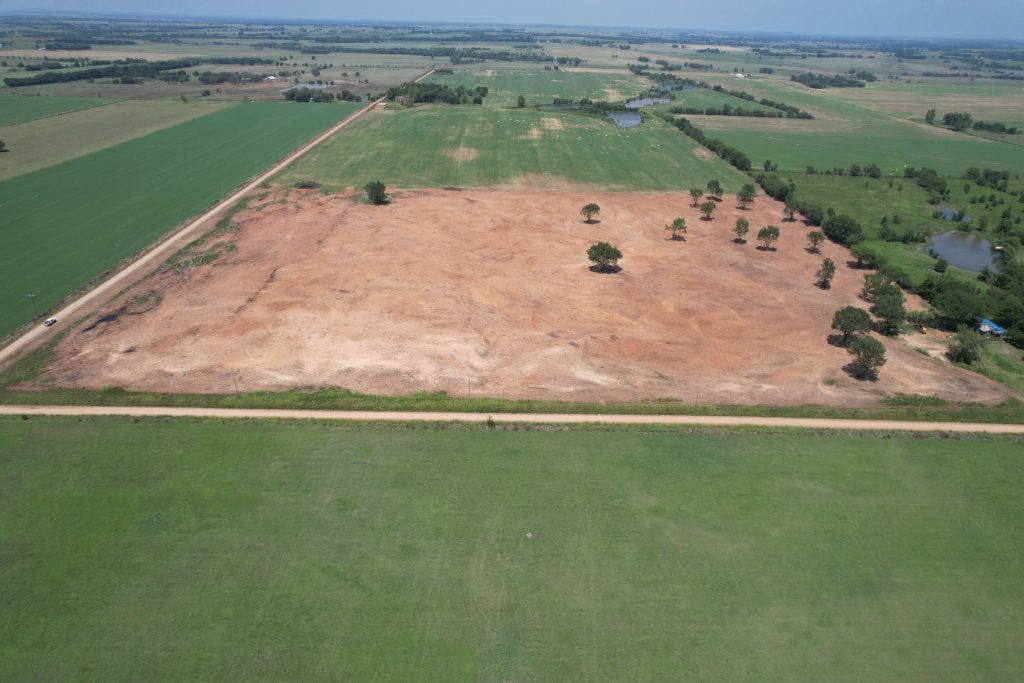
Achieving success in road construction demands a nuanced approach, considering various essential phases. From initial design to execution, involving land clearing, earthworks, paving, and quality control, each step contributes significantly to the security and stability of the constructed roads.
Going into more detail, meticulous planning precedes any project, involving thorough land-clearing activities such as trench digging, tree removal, and soil grading. Planning also includes a detailed cost analysis, scheduling considerations, and logistics management, ensuring the availability of necessary equipment, skilled labor, and reliable subcontractors. Further steps involve the application of durable asphalt coverings, ensuring longevity with vigilant oversight from stringent quality assurance measures.
In Abilene, TX, and its neighboring areas, Stewart Ranch Services offers a complimentary quote, marking the initial step toward the successful realization of your construction project.
Planning and Design
Road building in Abilene, Texas begins with the planning phase, an essential step for achieving success. Here, key points like existing and predicted traffic patterns, costs-analysis data, design drawings as well and finance requirements are taken into account particularly when designing roads which demand civil engineers’ and city planners’ involvement to begin a thorough process of devising before transferring the task over to any company in charge of carrying out completion works.
When working on road engineering projects particular factors must be considered such as setting speed limits based on the vehicle type that will travel through it.
Then there’s angle grading plus view obstruction checkups along with required braking distances needed, all elements designed to guarantee safety standards suited towards local community needs while also providing drivers pleasantness whilst the driving experience is being achieved at its finest extent.
Land Clearing and Site Preparation
Road building in Abilene, Texas necessitates thorough land clearing and site preparation procedures. This critical phase involves removing vegetation, trees, and various materials from the land before construction can commence. Grading and excavation play vital roles in creating a level ground surface, crucial for proper drainage and to prevent issues like potholes in completed roads on farms or ranches.
The importance of land clearing extends to various construction projects, encompassing buildings and roads. Land clearing tasks include adding or removing rock, dirt, trees, soil, trenching, ground excavation, embankment construction, and filling placement.
Leveraging advanced equipment like farm machinery, mini-excavators, and compact track loaders expedites the land-clearing process and ensures precision in height measurements during grading stages. This precision is essential for shaping road locations efficiently.
Moreover, installing culverts is imperative to address potential flooding and safeguard against disruptions to productivity. These measures contribute to establishing high-quality access routes, seamlessly connecting markets to local farmers’ lands.
The incorporation of advanced tools forms the foundation of an effective system for laying the groundwork in rural areas, facilitating safe car travel without encountering bumps caused by rainwater pools or insufficient underlying structures.
The application of paint on pavement and road markings
At the heart of highway safety and efficiency is the meticulous application of pavement markings that distinctly outline directions and lanes.
Tips for pavement and road marking:
Road marking regulations:
Adhering to the distinct road marking regulations of each country is crucial for those involved in extensive road marking projects. The ability to paint a variety of lines and symbols in line with these standards is paramount. Utilizing a multi-gun, multi-color setup, particularly a striper with automatic gun control, facilitates the creation of precise broken lines.
Curb Marking:
Navigating the challenges of curb marking is a common issue in pavement marking projects. The 90° angle of curbs requires a specialized gun configuration for effective spraying, overcoming this frequent obstacle.
Reflective road marking:
Reflective road marking introduces an additional layer of complexity, calling for a special material with glass microspheres. The application of these microspheres necessitates specific equipment, such as the Graco Linelazer HP reflective series, equipped with a pressurized bead reservoir. This advanced system features an adjustable nozzle for precise control over the width of the microsphere dispersion, ensuring heightened accuracy.
Abilene Road Building - Farm to Market and Ranch Roads
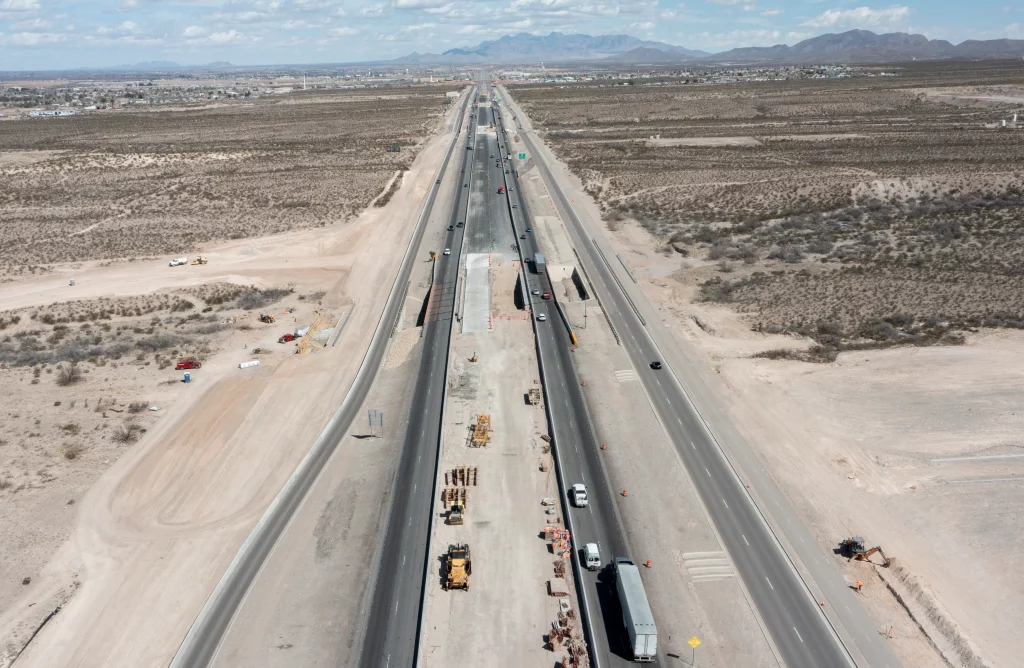
Farm roads serve a unique purpose by connecting rural areas to urban centers, facilitating the transportation of people and goods. However, constructing these roads is a complex task that demands attention to both safety and durability.
The process starts with a comprehensive assessment of the terrain to design an optimal route, followed by obtaining the necessary permits from authorities. Land clearing and soil preparation precede actual construction, establishing the groundwork for a robust road network.
Grading and paving are critical stages, with the choice between asphalt and concrete depending on specific project needs. Integrating drainage systems, constructing switchbacks, and erecting walls in hilly terrains are crucial elements of the road-building process. Each step is integral to the creation of secure and functional routes that meet local agricultural requirements, including those of ranches.
Routine maintenance inspections are imperative for ongoing functionality, focusing on preserving the road’s optimal condition. Installing signage and features like gutter curbs plays a vital role in water control, particularly during periods of heavy traffic, preventing potential flooding.
Abilene Road Building - Sustainable Practices
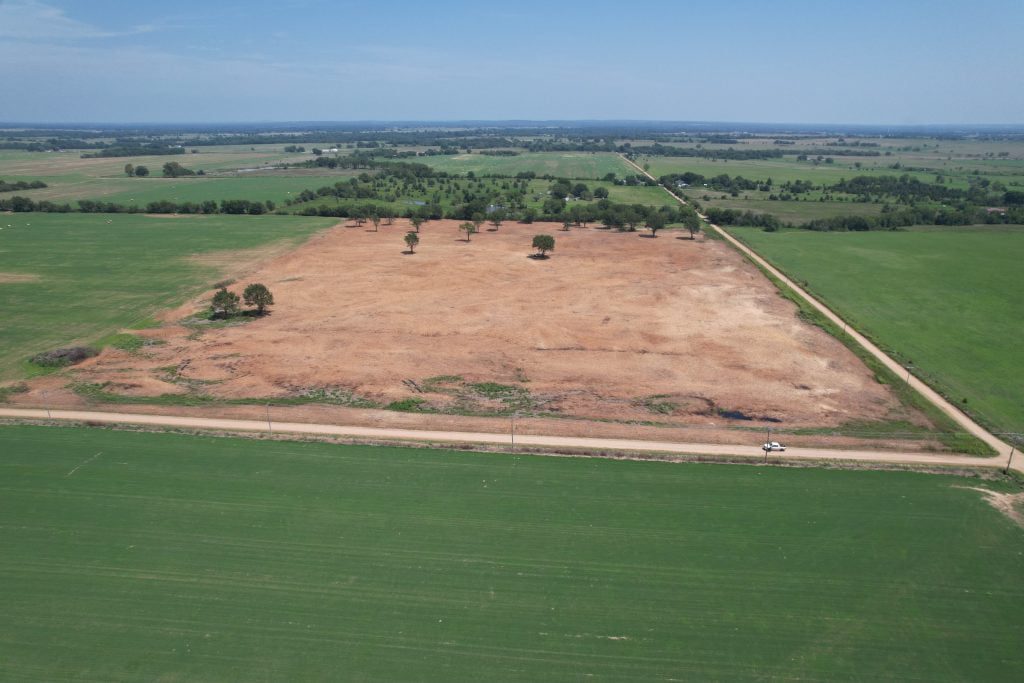
Road building in Abilene, TX involves confronting environmental challenges and placing emphasis on the need for sustainable practices to minimize ecological impact. Choosing materials with a reduced environmental footprint that can decompose in an eco-friendly manner during production is pivotal.
Opting for recycled asphalt and concrete over new materials, along with the design of durable products for extended longevity, is a strategic approach. This not only reduces the volume of materials used but also results in significant cost savings in long-term maintenance. Incorporating these practices into current road construction processes is instrumental for the development of more environmentally conscious alternatives in the future.
Case Study: Successful Road Construction Project in Texas
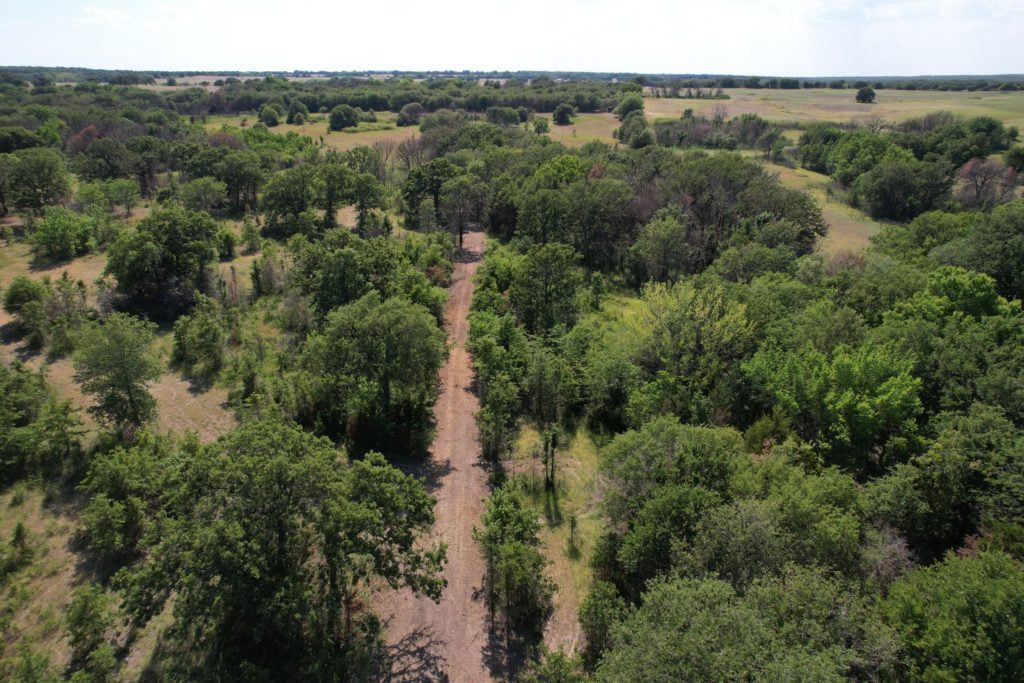
El Paso’s I-10 reconstruction and expansion project serves as a prime example of effectively managing the intricacies of road construction, paralleling approaches in Abilene and San Antonio.
The project’s success was contingent on meticulous preparation for budgeting and adherence to stringent timelines. The involvement of experienced personnel committed to ongoing training and strict adherence to safety protocols played a pivotal role. The integration of cutting-edge machinery was equally crucial, ensuring precision and expediting overall completion.
This case study emphasizes the significance of employing advanced techniques in roadwork, showcasing positive outcomes resulting from intentional planning, skilled labor, and the use of state-of-the-art equipment within the Texas context of highway construction.
Summary
Witnessing the evolution of road construction, from ancient civilizations’ mud bricks and stone to the contemporary use of advanced materials and machinery, is truly remarkable. A successful project outcome depends on careful planning and thorough site preparation.
In Abilene, road building has gained increased significance in our interconnected world. The emphasis lies in creating roads that are not only safe but also resilient enough to last for generations. This necessitates implementing suitable practices throughout the construction process, including the careful sourcing of materials such as mud or any other necessary supplies.
Frequently Asked Questions
What is the meaning of road building?
The process of constructing roads often involves utilizing materials like asphalt and concrete, which come from mining sites that transport the gravel to various plants for production. These are then employed in Abilene road-building projects.
How do you build a road?
Clearing the land, grading, and subgrade work are fundamental steps in successful Abilene road-building.
- Subgrade: Removing existing grass and topsoil during subgrade work ensures a strong foundation.
- Material types: The use of materials such as road base, crushed concrete, screened gravel, and asphalt millings enhances the durability of the road.
Entrust your Abilene Road Building project to Stewart Ranch Services for a hassle-free experience. We handle everything from land preparation to the final surface course, ensuring a robust and enduring road infrastructure.
